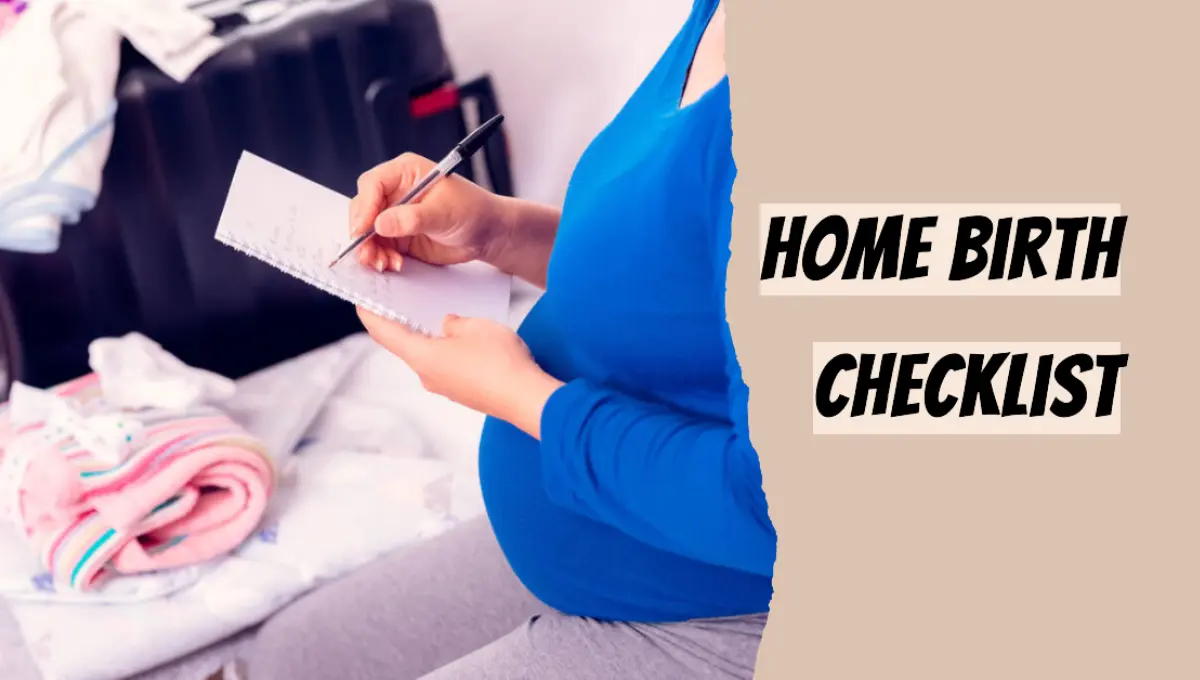
Are you preparing for a home birth and feeling a bit overwhelmed? You’re not alone! Welcoming a new life into the world is a remarkable experience, and with proper planning and organization, you can make it a smooth and joyful process. Whether it’s your first home birth or you’re a seasoned pro, this comprehensive guide will help you prepare for the big day.
Related: 12 Shocking Truths About Labor and Delivery: What They Don’t Warn You About
Understanding Home Birth
Before diving into the checklist, let’s briefly discuss what home birth entails. Home birth is the process of giving birth in the comfort and familiarity of your own home, with the assistance of a qualified midwife or healthcare provider. It’s essential to have a thorough understanding of the home birth process, its benefits, and the potential risks involved. Make sure you’ve done your research, consulted with a healthcare professional, and have a birthing plan in place.
Related: Understanding Cervical Checks During Labor
Preparation Timeline

The preparation for a home birth typically spans several weeks leading up to your due date. Here’s a general timeline to help you stay organized:
First Trimester (Weeks 1-12):
- Select Your Birth Team: Choose a qualified midwife or healthcare provider experienced in home births.
Second Trimester (Weeks 13-27):
- Create a Birth Plan: Discuss your birth preferences with your midwife and partner. Include details like pain management, labor positions, and who will be present.
- Home Birth Supplies: Begin gathering the necessary supplies for your home birth, which we’ll detail in the checklist.
Third Trimester (Weeks 28-40+):
- Prepare Your Home: Make sure your home is clean, organized, and ready for the birth. Set up a quiet, comfortable space for labor.
- Pack a Hospital Bag (Optional): While preparing for a home birth, it’s a good idea to have a hospital bag packed, just in case you need to transfer to a hospital for any reason.
- Finalize Birth Plan: Review and finalize your birth plan with your midwife or healthcare provider.
- Emotional Preparation: Focus on relaxation techniques, mindfulness, and positive affirmations to mentally prepare for labor.
Now, let’s delve into the checklist for your home birth preparations.
Related: Eating Dates For Natural Induction
Home Birth Checklist

Note: Consult with your midwife or healthcare provider for any specific recommendations tailored to your situation.
1. Birth Kit:
Your midwife will likely provide a custom birth kit or suggest where to purchase one. This kit includes essential medical supplies. Make sure you have it well in advance. Typical items in a birth kit may include:
- Sterile gloves (non-sterile gloves can also be useful)
- Surgical sponges
- Perineal cold pack
- Cord clamp
- Peri bottle
- Arnica tablets and arnica oil (for pain relief)
- Vitamin K (for the baby)
- Chlorhexidine or other antiseptic
- Lubricant (for checks)
- Sterile gauze
- Surgical drapes
- Sterile towels and washcloths
- Sterile scissors
- Sterile trash bags
- Head circumference measuring tape
- Fishing net (for unexpected situations)
2. Comfort and Postpartum Supplies:
- Sitz bath
- Postpartum pads
- Perineal balm
- Clariderm spray
- Nipple cream (if breastfeeding)
- Nursing pads
- Diapers for the baby
- Receiving blankets
- Newborn hat
- Baby thermometer
- Lip balm
- Snacks and drinks for you and your birth team
- Straws for easy sipping during labor
- Heating pad
- Essential oils (e.g., clary sage, lavender, frankincense)
- A birth tub or inflatable pool (if not provided by your midwife)
3. Home Preparation:
- Lay down shower curtain liners or tarps to protect your floors.
- Set up the birth pool or tub and test it in advance.
- Arrange clean towels, washcloths, and receiving blankets for immediate use.
- Have a hamper or designated area for soiled towels and linens.
- Ensure you have access to hot water for filling the birth pool (consider an immersion water heater as a backup).
4. Supplies for Bed:
- Waterproof mattress protector
- Old sheets
- Chux pads or bed pads
- Cheap fitted sheets (to protect your good sheets)
- Newborn hat
- Towels and blankets for the baby
5. Emergency Supplies:
- Fetal heart rate monitor and gel
- Sterile gauze and iodine (for possible tears)
- Nasal aspirator (for baby’s mucus)
- Sterile gloves
- Sterile trash bags (for disposal)
- Sterile scissors
- Halo To
- Hospital route and emergency contact information
- Extra essentials, like a phone charger, snacks, and music
Related: Mucus Plug In Toilet After Peeing
Mental and Emotional Preparation:
- Listen to relaxation tracks or meditations designed for childbirth.
- Write out your birth plan and affirmations.
- Create a playlist of uplifting music for labor.
- Practice deep breathing and relaxation techniques.
Remember that every home birth is unique, and the items you’ll need may vary based on your specific preferences and circumstances. Always consult with your midwife or healthcare provider to ensure you have everything necessary for a safe and comfortable home birth experience.
Related: What Is The Miles Circuit To Induce Labor?
Conclusion
Preparing for a home birth involves thorough planning, organization, and emotional readiness. By following this checklist and timeline, you can ensure that you have all the necessary supplies and support in place for a successful home birth. Don’t forget to maintain open communication with your midwife or healthcare provider throughout the process, and trust in your body’s ability to bring your baby into the world in the comfort of your own home.
Frequently Asked Questions (FAQs)
Is home birth safe?
Many studies have shown that home birth can be safe for low-risk pregnancies when attended by trained healthcare professionals, such as certified midwives. However, the safety of home birth can depend on various factors, so it’s essential to discuss your specific situation with a healthcare provider.
What supplies do I need for a home birth?
A home birth kit typically includes items like sterile gloves, birthing pool, towels, and more. Your midwife can provide a list of necessary supplies. Additionally, you might want to include comfort items and postpartum supplies for your own needs.
Can I have pain relief during a home birth?
Yes, you can have pain relief options during a home birth, such as water immersion, relaxation techniques, and natural pain relief methods. Discuss your pain management preferences with your midwife to plan accordingly.
What is the role of a midwife during a home birth?
Midwives play a crucial role in home births. They provide prenatal care, monitor the progress of labor, assist with the birth, and offer postpartum care for both the mother and baby. They prioritize safety and the well-being of both throughout the process.
When should I transfer to a hospital during a home birth?
It’s essential to have a clear plan for when to transfer to a hospital, especially if complications arise during labor or delivery. Your midwife will guide you on when it’s necessary to transfer for medical intervention, ensuring the safety of both you and your baby.



